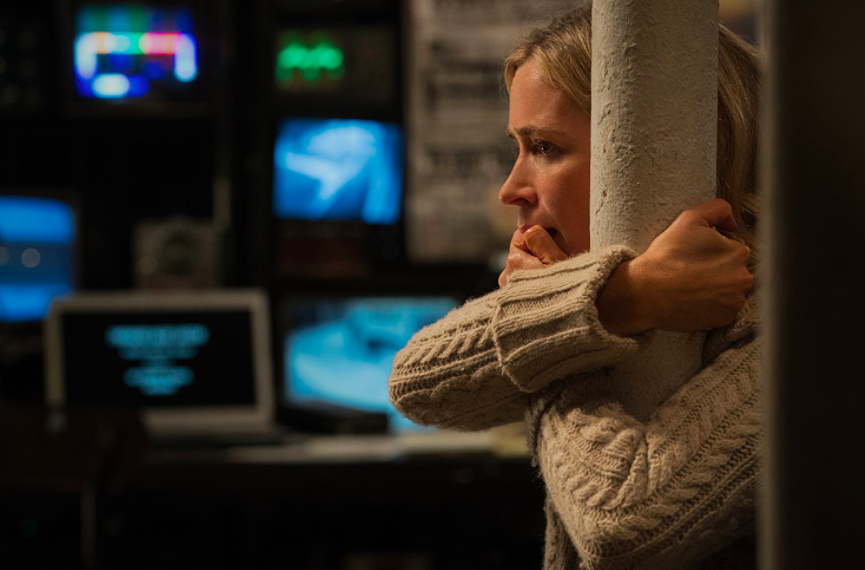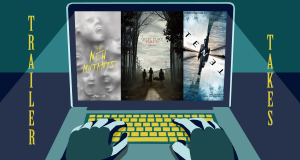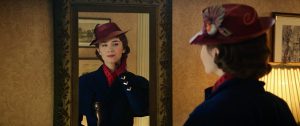A Quiet Place begins in the middle of a story: Without speaking, a mother and her children search a disordered, abandoned store. As the older daughter walks around the space, her younger brother wanders from sight. The camera cuts suddenly away from the girl’s silent, gentle gaze to her younger brother’s shoes, his heels lifting off a small stool to reach for a high-up toy. When he accidentally knocks it off, the girl darts into the frame, catching it to prevent a noisy crash. Their father breathes a sigh of relief.
This opening scene reflects the ways John Krasinski, who plays the father, Lee, and who directs the film, is forced to be resourceful throughout A Quiet Place. His story focuses on a family that must be silent in order to survive monsters that hunt by following noises, and thus dialogue is mostly unavailable. Krasinski turns instead to props, sign language, and, ironically, sound, in order to establish the circumstances of the film. These elements emphasize a well-developed theme of parenthood, rather than focus on the monsters that hunt the family. This makes A Quiet Place scarier because the hunted family earns our sympathy.
Krasinski heightens and relaxes tension throughout A Quiet Place, keeping viewers on the lookout for the next scare. His tight frames selectively include details and characters, maintaining uncertainty about the presence of threat. The monsters are visually unsavory, with lanky extremities and retractable armor over their heads. They’re blind, however, and have fleshy, pink ear drums that listen for prey. In many tense scenes, the family members must hide from their predators with bated breath and restrain themselves from making any vocal expression of the sheer terror the monsters inspire.
There is little music and almost no speaking, but sound still alters the level of tension and establishes details. The family makes little intentional noise, but their gentle steps and other slight movements are still perceptible. Sanded pathways, leaf plates at mealtimes, and ever-careful movements all enable their near-total silence and the believability of their survival. During the opening scene, a complete silence when the camera focuses on the family’s daughter, Reagan (Millicent Simmonds), or shoots from her perspective reveals that the character is deaf. When the camera switches focus, ambient noise returns. When accidents happen, like when middle son Marcus (Noah Jope) knocks over a lantern while playing a game, everyone freezes and all sound stops as the audience wonders along with the characters whether the monsters heard it too.
After the mother, Evelyn (Emily Blunt), gives birth to a son, Lee fits him with a small oxygen mask before settling the baby into a wooden box fashioned into a crib with padding and blankets. After securing the soundproof lid, Evelyn asks Lee, “Who are we if we can’t protect them?” Moments like this poignantly establish the parents’ drive to protect their children, even at their own peril.
One can rightly assume a strong on-screen chemistry between Krasinski and Blunt, who are married in real life. There is a genuine affection that all the actors share for one another and express through their stellar performances. According to behind-the-scenes footage and interviews with the cast, the fictional family grew close during filming. Simmonds, who portrays their daughter and is deaf herself, speaks using American Sign Language, which the other actors learned in order to be better able to communicate with her. The connections that the actors shared, coupled with their commitment to portraying a family with a deaf child as realistically as possible, add a layer of sincerity to already emotional moments between parent and child or brother and sister.
Beyond the communal on-screen chemistry, each actor impressively becomes his or her character. Krasinski is devastating as a father desperate to protect his family, and demands a deeply empathetic response. Blunt, too, whose character displays remarkable stamina and bravery, gives a stellar performance, highlighted by the wrenchingly silent birth of the couple’s new baby boy. Jope portrays Marcus’ youthful innocence well, but is also able to subtly dampen it with the weight of ceaseless terror. However, it is Simmonds who is the true star of the film. Her facial expressions light up each scene, and, with the skills of a lifelong actor, she works her character from a confident, charming older sister to a burdened and lonely young woman.
Possible critiques against this film will inevitably revolve around “would’ve, could’ve, should’ve” complaints. As is typical with horror films, characters don’t always act in what some viewers would consider to be a logical way.
Luckily, it is obvious from the attention to detail throughout the film that Krasinski planned ahead for such frustrations. He makes it clear: The family does not want to fight the monsters. Lee and Evelyn are parents above all, and they try their best to maintain elements of normalcy, from reviewing long division with Marcus, to slow dancing to music played through headphones. There may still be those who are distracted from the strength of the film because they are convinced that, if in the same situation, they could do things better. Barring these judgements, as they ought be barred, A Quiet Place is a well thought-out and visually-developed film, not to mention a thrilling, emotional ride.





